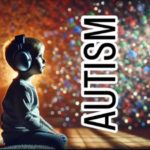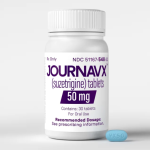In a world where voices command power, influence, and change, few have sparked as much curiosity as that of Robert F. Kennedy Jr. His distinct, strained, and sometimes unsteady voice has become a topic of discussion, speculation, and medical intrigue. But what exactly causes this unusual vocal condition? The answer lies in a rare neurological disorder known as spasmodic dysphonia.
For years, Kennedy has spoken openly about his battle with this condition, yet many still don’t fully understand what it is, what causes it, and—most importantly—whether it can be prevented. Today, we take a deep dive into spasmodic dysphonia, the science behind it, and what steps you can take to protect your voice from developing similar problems.
The Voice That Raised Questions
When Robert F. Kennedy Jr. takes the stage, audiences often find themselves captivated—not just by his words, but by the way they are delivered. His voice sounds strained, tight, and at times, unpredictable, making it difficult for listeners to ignore. For many, the first instinct is to assume he has a sore throat, vocal cord damage, or even the lingering effects of a respiratory infection. But in reality, Kennedy’s condition is far more complex.
His diagnosis? Spasmodic dysphonia—a rare neurological disorder that affects the muscles controlling the vocal cords. Unlike common vocal strain, this disorder is rooted in the brain, causing involuntary spasms that disrupt speech patterns.
What Is Spasmodic Dysphonia?
At its core, spasmodic dysphonia (SD) is a neurological voice disorder that disrupts normal vocal cord function. It falls under the category of dystonias, which are movement disorders characterized by involuntary muscle contractions. These contractions cause the voice to break, strain, or sound breathy and weak, often making speech effortful and inconsistent.
Types of Spasmodic Dysphonia
There are three primary types of spasmodic dysphonia, each affecting the vocal cords in different ways:
- Adductor Spasmodic Dysphonia (ADSD) – The most common form, in which the vocal cords involuntarily tighten and close, producing a strained or choked voice.
- Abductor Spasmodic Dysphonia (ABSD) – A rarer form, where the vocal cords involuntarily open, leading to a weak, breathy, and quiet voice.
- Mixed Spasmodic Dysphonia – A combination of both forms, where the vocal cords alternate between spasming open and closed, making speech highly unpredictable.
What Causes Spasmodic Dysphonia?
Unlike vocal cord nodules or polyps, spasmodic dysphonia is not caused by overuse or strain. Instead, it is believed to be a neurological disorder originating in the basal ganglia—a deep part of the brain responsible for motor control.
Potential Triggers and Risk Factors
While the exact cause of spasmodic dysphonia remains unknown, several factors may contribute to its onset:
- Genetic Predisposition: Some cases run in families, suggesting a possible hereditary component.
- Neurological Trauma: Brain injuries, strokes, or neurodegenerative diseases can sometimes lead to voice disorders.
- Viral Infections: Some individuals report developing symptoms after a severe upper respiratory infection.
- Stress and Anxiety: While not a direct cause, high stress can exacerbate symptoms, making speech more difficult.
Global and U.S. Statistics on Spasmodic Dysphonia
| Indicator | Global Data | U.S. Data | Source |
|---|---|---|---|
| Estimated number of cases | 50,000 – 100,000 people | 30,000 – 50,000 people | Dystonia Medical Research Foundation, National Spasmodic Dysphonia Association (NSDA) |
| Percentage of total dystonia cases | 10 – 15% | ~15% | National Institute of Neurological Disorders and Stroke (NINDS) |
| Gender distribution | Women: 60%, Men: 40% | Women: 60%, Men: 40% | Mayo Clinic |
| Average age of onset | 30 – 50 years | 40 – 60 years | American Speech-Language-Hearing Association (ASHA) |
| Most common type | Adductor Spasmodic Dysphonia (ADSD) – 80% of cases | ADSD – 80% of cases | Johns Hopkins Medicine |
| Likelihood of misdiagnosis | Over 50% initially diagnosed as another voice disorder | Similar statistics in the U.S. | National Spasmodic Dysphonia Association (NSDA) |
| Hereditary component | 10 – 20% of cases show family history | 10 – 20% of cases show family history | National Institute on Deafness and Other Communication Disorders (NIDCD) |
| Percentage of people with a voice disorder | 6.6% (20 million globally) | 6.6% (20 million in the U.S.) | American Speech-Language-Hearing Association (ASHA) |
| Annual new cases diagnosed | ~10,000 worldwide | ~5,000 in the U.S. | NINDS |
| Number of speech therapy specialists treating SD | ~5,000 worldwide | ~3,000 in the U.S. | American Academy of Otolaryngology |
| Percentage of patients receiving Botox treatment | ~80% of diagnosed individuals | ~80% of diagnosed individuals | Johns Hopkins Medicine |
| Risk of developing SD after a viral illness | 20% | 20% | National Spasmodic Dysphonia Association (NSDA) |
Famous People Who Have Been Diagnosed with Spasmodic Dysphonia
- Robert F. Kennedy Jr. – Environmental lawyer and politician, known for his distinctive voice affected by SD.
- Diane Rehm – Longtime NPR radio host, who developed spasmodic dysphonia in the late 1990s and openly spoke about its impact on her career.
- Scott Adams – Creator of Dilbert, who was diagnosed with SD and struggled with voice control for years.
- Paul Parks – Former NASA scientist and engineer, who suffered from spasmodic dysphonia later in life.
- Jim Montgomery – Renowned swimming coach and Olympic gold medalist, who developed SD after years of coaching and public speaking.
Can Spasmodic Dysphonia Be Prevented?
Given that spasmodic dysphonia is a neurological disorder, preventing it entirely may not be possible. However, protecting your voice and maintaining vocal health can help minimize the risk of other voice-related disorders.
Tips for Maintaining a Healthy Voice
- Stay Hydrated – Drinking plenty of water keeps the vocal cords lubricated, reducing strain.
- Avoid Overuse – Limit excessive talking, especially in loud environments that force you to raise your voice.
- Manage Stress – Since anxiety can worsen symptoms, practicing mindfulness, yoga, or deep breathing can help.
- Warm Up Your Voice – Just like stretching before a workout, warming up the vocal cords before prolonged speech helps prevent tension.
- See a Specialist – If you notice persistent hoarseness, vocal fatigue, or difficulty speaking, consulting an otolaryngologist (ENT specialist) or a speech therapist can help catch potential issues early.
Treatment Options: Can Spasmodic Dysphonia Be Cured?
While there is no known cure for spasmodic dysphonia, several treatment options can significantly improve speech quality and make communication easier.
1. Botulinum Toxin (Botox) Injections
- The most common and effective treatment.
- Botox is injected into the affected vocal cord muscles to reduce spasms and improve voice control.
- Effects typically last 3-6 months before another injection is needed.
2. Speech Therapy
- Helps individuals develop techniques to work around vocal spasms.
- Includes breath control exercises and relaxation techniques to reduce strain.
3. Surgical Procedures
- Selective Laryngeal Denervation and Reinnervation (SLAD-R) is an advanced surgical option for severe cases.
- Involves rewiring the nerves controlling the vocal cords to reduce spasms.
4. Lifestyle Modifications
- Reducing caffeine and alcohol, which can dehydrate vocal cords.
- Using voice amplifiers to avoid unnecessary strain.
How RFK Jr. Manages His Condition
Robert F. Kennedy Jr. has never let his voice define him. Despite the challenges, he continues to speak publicly, advocate for causes, and run for political office. While he has acknowledged that spasmodic dysphonia makes communication difficult, he has also found ways to adapt.
Public Perception and Misconceptions
Due to the unique nature of his voice, RFK Jr. has faced speculation ranging from conspiracy theories to accusations of being sick. However, his case serves as a powerful example of overcoming adversity and using one’s voice—imperfect as it may be—for change.
The Bigger Picture: Raising Awareness
Despite being a rare disorder, spasmodic dysphonia affects thousands of people worldwide. Raising awareness can help reduce stigma, encourage early diagnosis, and promote research into better treatment options.
If you or someone you know experiences persistent vocal strain, frequent voice breaks, or difficulty speaking, don’t ignore it. Consulting a specialist early can make a significant difference in voice preservation and overall quality of life.
Final Thoughts
The story of RFK Jr. and his voice brings attention to a condition that is often misunderstood or overlooked. While spasmodic dysphonia remains a challenge, advancements in treatment and therapy offer hope.
Your voice is one of your most powerful tools—protect it, prioritize it, and never take it for granted.
















